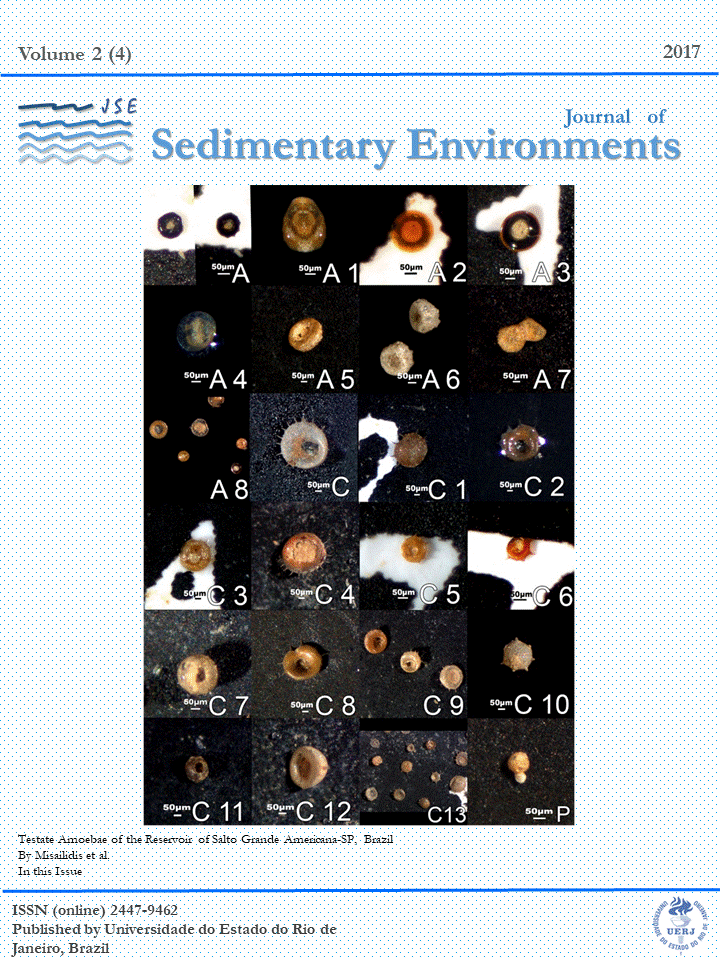TESTATEAMOEBAE AS BIO-INDICATORS OF CONTAMINATION BY TRACE ELEMENTS IN THE RESERVOIR OF SALTO GRANDE AMERICANA-SP, BRAZIL
DOI:
https://doi.org/10.12957/jse.2017.32586Keywords:
Trace Elements. Testate amoebae. Bio-Indicators. Pollutants. Reservoir.Abstract
This work aims to evaluate the degree of sediment contamination and the response of Testate amoebae populations through a sediment core taken from the Salto Grande Reservoir (RSG), situated in Americana, in São Paulo State (SP), Brazil. It is based on the analysis of the trace elements geochemistry (by ICP-OES) and Testate amoebae data (by stereomicroscopic morphometric analysis). The indices of homogeneity and richness (Simpson 1-D and Margalef) were calculated. Sediment contamination was evaluated according to VGQS (TEL and PEL). The results evidenced that the sediments of Facies 3 are highly contaminated since the beginning of RSG filling. Contamination caused significant decline of Testate amoebae populations dimension and diversity. In sedimentary facies with lower concentrations of trace elements diversity and size of Testate amoebae populations are higher and are composed of different species. The results of this work indicate that Testate amoebae populations showed differentiated responses to different environmental conditions. So, these amoeboid protists can be considered good indicators of pollution caused by trace elements in fresh water aquatic environments.
Downloads
Published
Issue
Section
License

Journal of Sedimentary Environments (JSE) is licensed under a Creative Commons Attribution-Noncommercial-Share Alike 4.0 International License.

